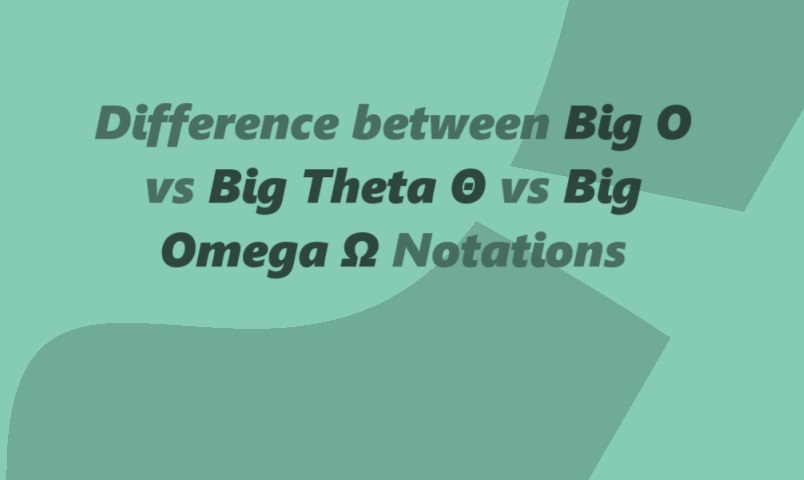In the field of computer science and mathematics, analyzing the efficiency and performance of algorithms is crucial. To measure the time complexity of an algorithm, various notations are used, such as Big O, Big Theta, and Big Omega. These notations help us understand how an algorithm’s runtime or space requirements grow as the input size increases. In this article, we will explore the differences between Big O, Big Theta, and Big Omega notations.
Big O Notation (O)
Big O notation is commonly used to describe the upper bound or worst-case scenario of an algorithm’s time complexity. It represents the maximum amount of time an algorithm will take to run, given a specific input size. The Big O notation is denoted as O(f(n)), where f(n) represents the function that describes the algorithm’s time complexity.
For example, if an algorithm has a time complexity of O(n^2), it means that the algorithm’s runtime grows quadratically with the input size. As the input size increases, the algorithm’s runtime will increase at a rate proportional to the square of the input size.
Big Theta Notation (Θ)
Big Theta notation provides a tighter bound on an algorithm’s time complexity by considering both the upper and lower bounds. It represents the average or tightest possible runtime of an algorithm for a given input size. The Big Theta notation is denoted as Θ(f(n)), where f(n) represents the function that describes the algorithm’s time complexity.
For example, if an algorithm has a time complexity of Θ(n), it means that the algorithm’s runtime grows linearly with the input size. As the input size increases, the algorithm’s runtime will increase at a rate proportional to the input size. Big Theta notation provides a more precise estimate of an algorithm’s time complexity compared to Big O notation.
Big Omega Notation (Ω)
Big Omega notation describes the lower bound or best-case scenario of an algorithm’s time complexity. It represents the minimum amount of time an algorithm will take to run, given a specific input size. The Big Omega notation is denoted as Ω(f(n)), where f(n) represents the function that describes the algorithm’s time complexity.
For example, if an algorithm has a time complexity of Ω(n^2), it means that the algorithm’s runtime will never be better than quadratic. Even for the best-case scenario, the algorithm’s runtime will increase at a rate proportional to the square of the input size.
Differences between Big O, Big Theta, and Big Omega
1. Upper Bound vs Tight Bound vs Lower Bound: Big O notation represents the upper bound of an algorithm’s time complexity, Big Theta notation represents the tightest bound, and Big Omega notation represents the lower bound.
2. Worst Case vs Average Case vs Best Case: Big O notation describes the worst-case scenario, Big Theta notation represents the average or tightest case, and Big Omega notation describes the best-case scenario.
3. Growth Rate Comparison: Big O notation provides an upper limit on the growth rate, Big Theta notation provides a precise estimate of the growth rate, and Big Omega notation provides a lower limit on the growth rate.
4. Usage: Big O notation is commonly used to analyze algorithms and determine their efficiency. Big Theta notation is used to provide a more precise analysis of an algorithm’s time complexity. Big Omega notation is used to describe the lower bound of an algorithm’s time complexity.
It’s important to note that Big O, Big Theta, and Big Omega notations are not mutually exclusive. An algorithm can have the same time complexity in all three notations, indicating that the upper, average, and lower bounds are the same. However, in most cases, the notations will differ, providing a range of possibilities for an algorithm’s time complexity.
Read this: Worst, Average, and Best Case Analysis of Algorithms
Conclusion
Big O, Big Theta, and Big Omega notations are essential tools for analyzing the time complexity of algorithms. They provide valuable insights into an algorithm’s performance and help in making informed decisions when designing or optimizing algorithms.

